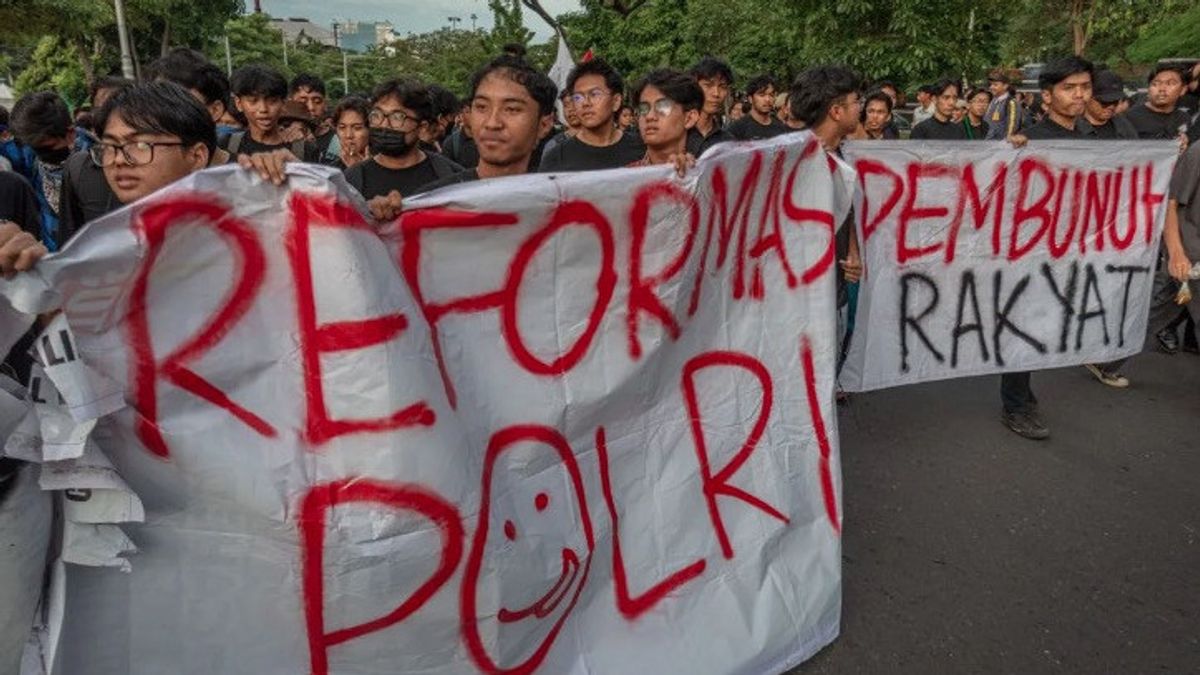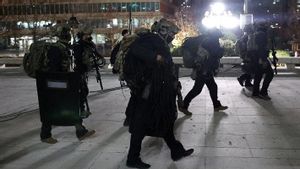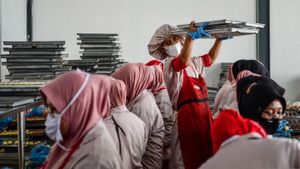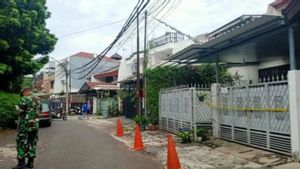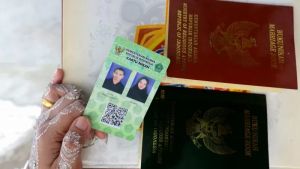JAKARTA The series of shooting cases carried out by the police are increasingly being discussed. A number of parties urged that the police should evaluate the use of firearms.
In recent weeks, residents have been shocked by the use of weapons by police officers who are considered to have been carried out outside the jurisdiction. The first was the police shooting action that took place in South Solok, West Sumatra on November 22.
Not long ago, it was the turn of a SMKN 4 student in Semarang, GR, who became a victim. This 17-year-old teenager died after being shot by a live bullet by a police officer known as Aipda R.
Until now, the reason behind the shooting was still a puzzle. In the police version, GR died due to being involved in a brawl. According to information from the Semarang Police Chief, Kombes Pol. Irwan Anwar, when two groups were involved in a brawl, police officers appeared who were trying to intervene. Irwan's claim, his members opened fire as a "firm action" because there was an attack.
Seeing the shooting incident carried out by the police in the near future, the discourse so that the police would no longer be given a firearm surfaced. Later, there was a discourse that the police were only given a bat, not a gun.
But this information is different from what was conveyed by the Head of Propam of the Central Java Police, Kombes Aris Supriyono. According to Aris, Aipda R shot GR because one of the three group's motorbikes ate his way.
Aipda R parked his motorbike in the middle of the road. Then stand in a standby position, intercepting G who was driving with two of his friends. Aipda Robig then pulled the trigger on them from a distance of less than two meters. That's what is illustrated from the CCTV footage of a minimarket near the scene.
"The alleged violator became hit by a pickpocket, finally the alleged violator waited for the three people to turn around, something like that and there was a shooting," said Aris in a hearing with Commission III of the DPR RI at the Parliament Complex, Senayan, Jakarta (3/12/2024).
The difference in chronology conveyed by the Semarang Police Chief Kombes Irwan Anwar and the Head of Propam of the Central Java Police, Kombes Aris Supriyono, was commented on by forensic psychologist Reza Indragiri Amriel.
According to him, if the shooting was carried out to stop the brawl, there would still be a color of police work. However, this reason still needs to be examined, whether the shooting was carried out procedurally, proportionally and professionally, but at least the shooting was carried out to stop the criminal incident.
But if you talk about other reasons, as revealed by the Head of Propam of the Central Java Police, Kombes Aris, according to Reza, this tragedy began with a roadrage, because of the situation at that time the alleged violator was waiting for the victim to shoot.
Road urban can actually be said to be an ordinary event. For example, there are drivers who, because of conflicts on the highway, express their anger by playing horn every time. There are also those who repeat the gas. There are also those who are limited to taking swearing. What is scary, there is a driver who pointed a firearm at his 'against'.
"The direction, referring to the chronology conveyed by Propam Aipda RZ, actually deliberately shot at the person who had caught him. How can it be interpreted as -at least - murder?" explained Reza to VOI.
Reza explained that there are four elements related to this. First, if the shooting carried out by a police officer is directed selectively and specifically to a specific target. Second, if at the time lag between the moment of pick-up and shooting, Aipda RZ builds an intention to shoot specific targets as a retaliatory action.
Third, if he can imagine the effect on the target resulting from the shooting. And fourth, the shooting was aimed at a specific target not preceded by warning shots to non-lethal parts of the body.
If the four elements are met, then the shooting by Aipda RZ can be categorized as a grassdegree milder. It means equally. Not knowingly, recklessly, let alone negligently," added Reza.
In the DPR Commission III hearing to discuss the case, PDIP legislator I Wayan Sudirta opened the discourse so that the police would no longer be given firearms. He said police in a number of developed countries were only given batons. Wayan said this proposal could be studied and could be implemented in Indonesia.
"This is careful because of the study, although it is not yet in the form of a law, the existing study on how the police are quite capable of batons in various developed countries. It looks slowly but surely we will lead there," he said.
In Indonesia, the use of firearms is regulated in the National Police Chief Regulation (Perkapolri) Number 8 of 2009. Article 47 paragraph 1 states that the use of firearms can only be used to protect human lives.
Meanwhile, the greeting of Perkapolri 1/2009 states that the use of firearms is the last attempt to stop the perpetrators of crimes or suspects.
SEE ALSO:
In some countries, the use of firearms by the police has begun to be abandoned. Even if allowed, its use is limited and goes through a very strict selection. The UK, Ireland, Zealand Bari, Iceland, Norway, to Botswana are among those enacting this policy.
Botswana is the only country in Africa whose police are prohibited from using weapons. In exchange, they are only equipped with pepper sprays and batons.
Meanwhile, Norway is a country with a low fatal shooting rate. This is because the majority of police do not use weapons. Only the police have passed the selection and strict training allowed to use weapons, and it turns out that the figure is only 15 percent of applicants.
Police observer from the Institute for Security and Strategic Studies (ISESS) Bambang Rukminto criticized permission to use firearms attached to personnel or members as has been in effect in Indonesia. Supposedly, said Bambang, the permit was attached to duty.
This means that personnel who are outside their duties must return their weapons. In addition, he also encourages selection of weapons with sharp and ordinary bullets. Sharp bullets are used for high-risk tasks, while for moderate or low risk there is no need to use live ammunition.
"Such as the disbandment of demonstrations or brawls. They are not criminals but perpetrators of social order. So there is no need to use live ammunition," he said.
Bambang continued, basically the use of firearms by police was not to kill, but to stop threats to personnel or to the public.
But the fact is that the use of firearms has often been misused because it is attached to members. Even outside of duty, it is not uncommon for those who use it to be arrogant and bring it to their homes, even though it is not necessary.
Meanwhile, Executive Director of Indonesia Police Investigation and Control (IPIC) Rangga Afianto assessed that the police's ban on the use of weapons has the potential to lead to an increase in crime and crime rates in society.
However, the police need to evaluate standard operating procedures (SOP) for the use of firearms by their apparatus. There are two things that need to be evaluated, namely the use of senpi for service and periodic supervision. Permits for giving firearms are mandatory through strict selection, not only from the ability of members but also from the psychological side.
"The psychological test instrument must be really specific, differentiated between applying for firearms and for other purposes," he said.
Regarding supervision, it needs to be done regularly and carried out by a special bureau. If needed, said Rangga, the evaluation is carried out by superiors of each unit every month.
The English, Chinese, Japanese, Arabic, and French versions are automatically generated by the AI. So there may still be inaccuracies in translating, please always see Indonesian as our main language. (system supported by DigitalSiber.id)
